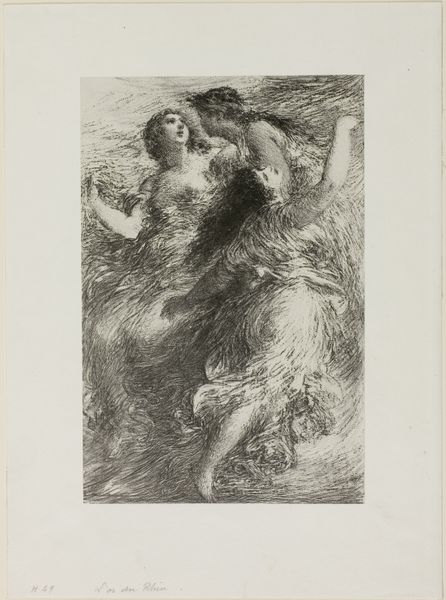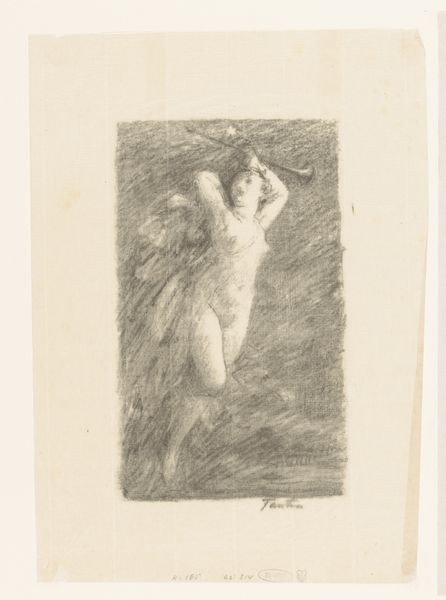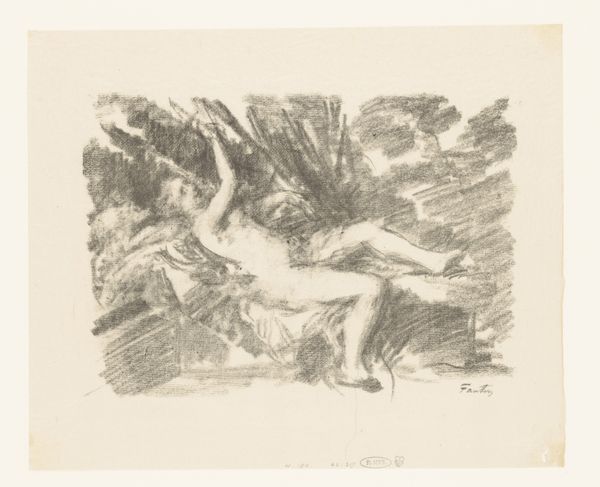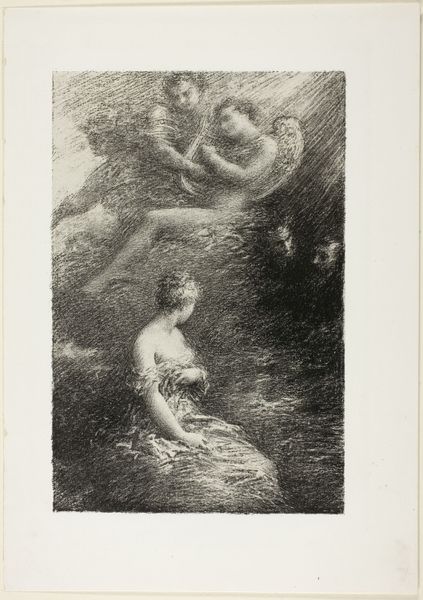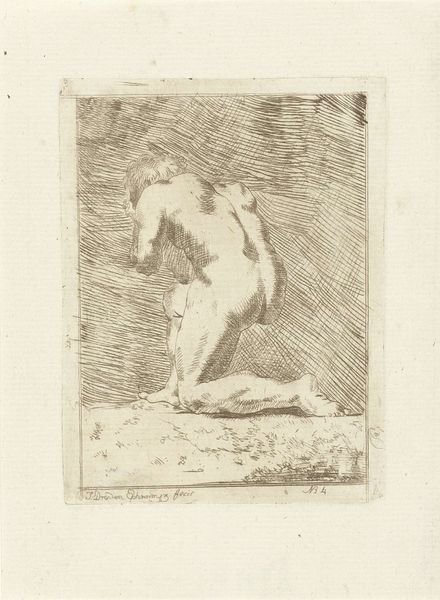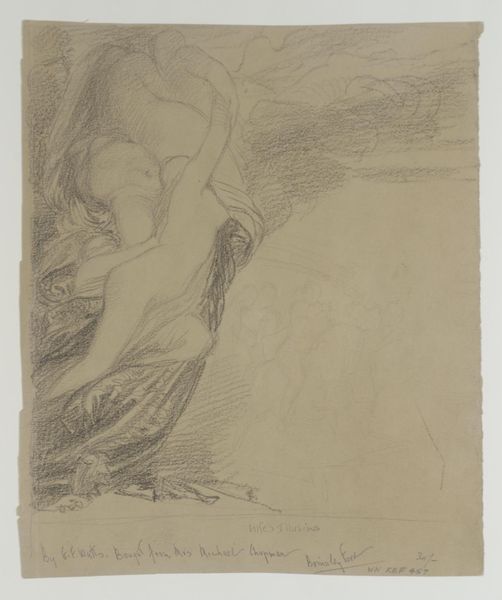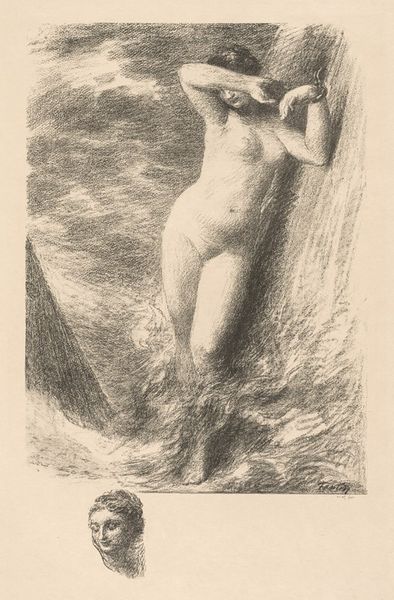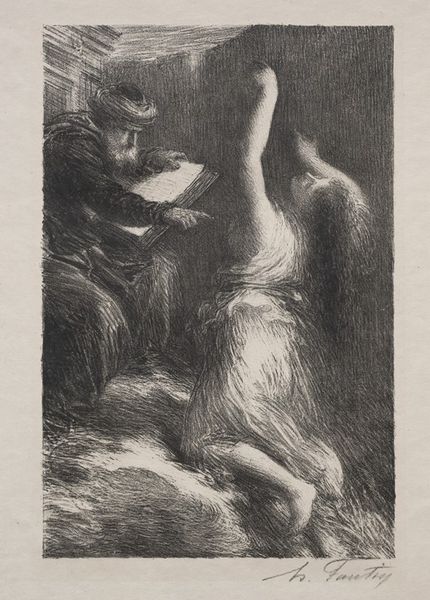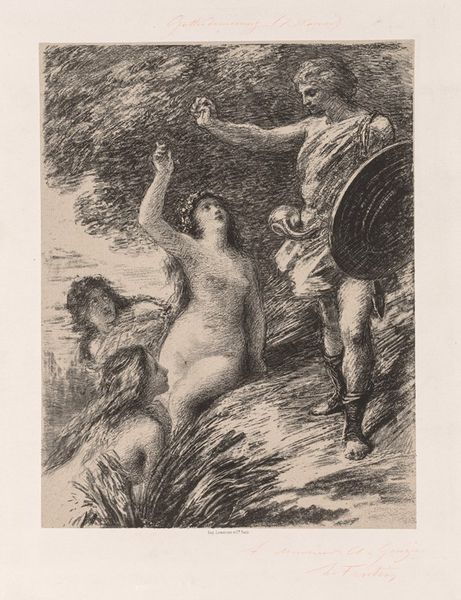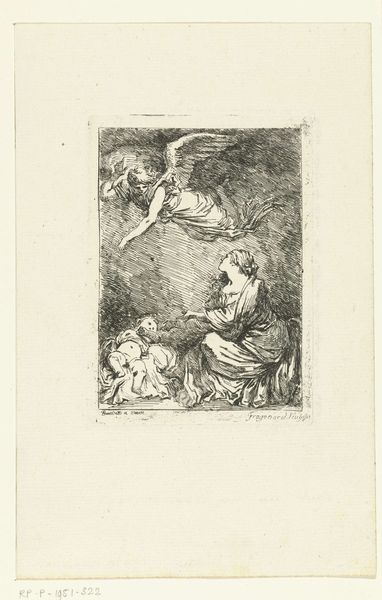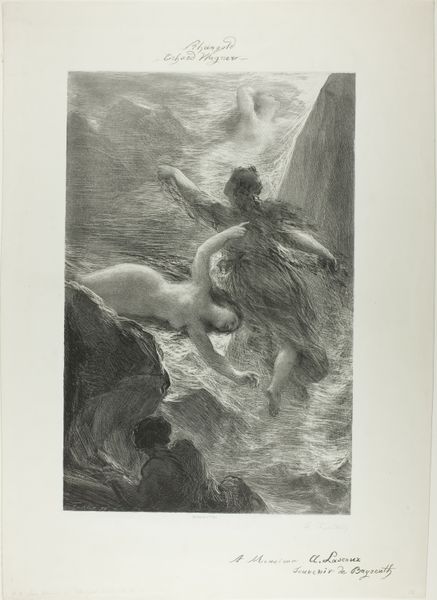
print, etching
# print
#
etching
#
landscape
#
figuration
#
symbolism
#
nude
Copyright: Public Domain: Artvee
Editor: This is Henri Fantin-Latour's "Sarah la Baigneuse" from 1892, an etching. It feels so dreamy and ethereal. What do you see in this piece, particularly regarding its representation of the female form? Curator: This etching is fascinating, isn't it? Beyond its dreamlike aesthetic, I see a negotiation with societal expectations and artistic traditions. Latour's "Sarah" exists in this liminal space, drawing upon classical ideals of beauty while also subtly challenging them. Editor: How so? It seems like a straightforward depiction of a nude. Curator: Think about the context: late 19th century, burgeoning feminist movements, and debates about women's roles. This isn’t simply about portraying the nude female form; it’s about suggesting agency. Her gaze is directed, her body engaged with the swing. It brings up questions of visibility and representation. Who is she for? Is she presented for the male gaze, or is she independent of it? Editor: That's a compelling way to look at it. The way she interacts with her surroundings suggests an element of power that I didn’t initially perceive. It’s as if she is appropriating the space for herself. Curator: Precisely. It encourages us to consider her, not as a passive object, but as an active participant within her environment. What does it mean to depict a woman nude in nature during this era? Editor: This has definitely shifted my perception. I initially saw just a beautiful image, but now I am questioning the social narratives at play. Curator: Art is never created in a vacuum; it is essential to place the work in conversation with the dominant perspectives of that historical moment and with our current social awareness. Editor: Exactly. I'll be thinking about that for a long time.
Comments
No comments
Be the first to comment and join the conversation on the ultimate creative platform.
